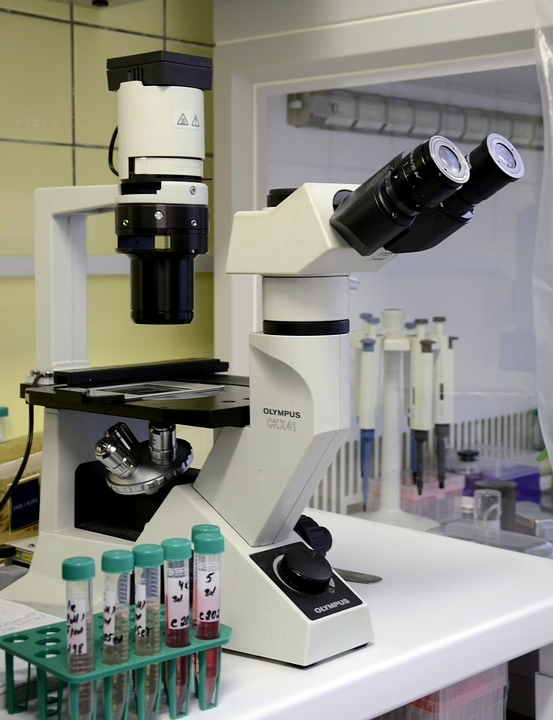Decoding the Biology Exam: A Comprehensive Guide to Format and Marking Scheme
Biology, the study of life, is a fascinating and complex subject. Whether you’re a high school student grappling with cellular respiration or a university undergraduate delving into the intricacies of genetics, understanding the biology exam is crucial for success. This article provides a comprehensive guide to the typical biology test paper format and marking scheme, equipping you with the knowledge to approach your exams strategically and maximize your performance. We will explore various question types, common marking rubrics, and offer insights into how examiners assess your understanding of biological concepts.
1. Introduction: The Significance of Understanding Exam Structure
The biology exam is more than just a test of your knowledge; it’s a platform to demonstrate your understanding of fundamental biological principles, your ability to apply those principles to real-world scenarios, and your capacity to critically analyze and interpret scientific data. Understanding the exam format and marking scheme provides several significant advantages:
- Strategic Preparation: Knowing the types of questions you’ll face allows you to tailor your study strategy, focusing on areas where you need more practice and building a strong foundation in core concepts.
- Effective Time Management: Familiarity with the exam structure enables you to allocate your time wisely during the exam, ensuring that you address all questions adequately and avoid running out of time.
- Targeted Answering: Understanding the marking scheme allows you to craft your answers in a way that directly addresses the criteria for assessment, maximizing your chances of earning full marks.
- Reduced Exam Anxiety: Knowledge of the exam format and marking scheme can significantly reduce anxiety by providing a sense of control and predictability, allowing you to approach the exam with confidence.
- Improved Performance: Ultimately, a thorough understanding of the exam structure and marking scheme translates into improved performance and a higher grade.
2. Common Biology Exam Question Types:
Biology exams typically employ a variety of question types designed to assess different levels of understanding and cognitive skills. These question types can be broadly categorized as follows:
-
2.1 Multiple Choice Questions (MCQs):
- Description: MCQs consist of a stem (the question or incomplete statement) followed by several options (usually four or five), only one of which is correct or the best answer.
- Assessment: MCQs primarily test your recall of facts, definitions, and basic concepts. They also assess your ability to identify the correct answer from a list of plausible alternatives.
- Strategies:
- Read the stem carefully and understand what is being asked.
- Eliminate obviously incorrect options.
- Consider each remaining option carefully, looking for keywords or phrases that match your knowledge of the concept.
- If you are unsure, make an educated guess based on your understanding of the subject matter.
- Be wary of “trick” answers that may be similar to the correct answer but contain subtle errors.
-
2.2 True/False Questions:
- Description: These questions present a statement, and you must determine whether it is true or false.
- Assessment: Similar to MCQs, True/False questions assess your recall of facts and your understanding of basic concepts. They often test your ability to identify subtle inaccuracies in statements.
- Strategies:
- Read the statement carefully, paying attention to every word.
- Consider the statement as a whole; a single false word can make the entire statement false.
- Be wary of qualifying words like “always,” “never,” “all,” or “none,” as these often indicate a false statement.
-
2.3 Short Answer Questions:
- Description: Short answer questions require you to provide concise answers to specific questions, typically in a few sentences or a short paragraph.
- Assessment: These questions assess your ability to recall and explain concepts, define terms, and describe processes in a clear and concise manner.
- Strategies:
- Read the question carefully and identify the key concepts being addressed.
- Provide a direct and concise answer that addresses the specific question being asked.
- Use appropriate biological terminology and avoid jargon.
- Organize your answer logically and use clear and concise sentences.
- Pay attention to the mark allocation and adjust the length and detail of your answer accordingly.
-
2.4 Diagram Labelling and Annotation:
- Description: These questions present a diagram of a biological structure or process, and you are required to label the different parts or annotate the diagram to explain its function.
- Assessment: These questions assess your knowledge of anatomical structures, your ability to identify and name different components of biological systems, and your understanding of the relationship between structure and function.
- Strategies:
- Carefully examine the diagram and identify the different parts or components.
- Use accurate and precise labels, ensuring that they are clearly connected to the corresponding parts of the diagram.
- When annotating the diagram, provide concise explanations of the function of each part and how it contributes to the overall process.
- Ensure that your annotations are clear, legible, and grammatically correct.
-
2.5 Structured Questions/Essays:
- Description: These questions require you to provide detailed and comprehensive answers to complex questions, typically in the form of an essay.
- Assessment: Structured questions assess your ability to synthesize information from different sources, analyze and interpret data, evaluate arguments, and communicate your understanding of complex biological concepts in a clear and organized manner.
- Strategies:
- Read the question carefully and identify the key concepts being addressed.
- Develop a clear and logical structure for your answer, typically including an introduction, body paragraphs, and a conclusion.
- Provide evidence to support your arguments, citing relevant examples, data, and research findings.
- Use appropriate biological terminology and avoid jargon.
- Write clearly and concisely, using grammatically correct sentences and paragraphs.
- Proofread your answer carefully for errors in spelling, grammar, and punctuation.
-
2.6 Data Interpretation Questions:
- Description: These questions present you with experimental data in the form of graphs, tables, or charts, and require you to analyze and interpret the data to draw conclusions.
- Assessment: These questions assess your ability to understand and interpret scientific data, identify trends and patterns, draw valid conclusions, and evaluate the limitations of the data.
- Strategies:
- Carefully examine the data and identify the variables being measured.
- Look for trends and patterns in the data, such as increases, decreases, or correlations.
- Draw conclusions based on the data, providing evidence to support your claims.
- Evaluate the limitations of the data and identify potential sources of error.
- Consider the context of the experiment and relate your findings to relevant biological principles.
-
2.7 Problem-Solving Questions:
- Description: These questions present you with a biological problem or scenario, and require you to apply your knowledge of biological principles to solve the problem or address the scenario.
- Assessment: These questions assess your ability to apply your knowledge of biological concepts to real-world situations, think critically, and develop creative solutions to problems.
- Strategies:
- Read the problem carefully and identify the key information and constraints.
- Apply relevant biological principles to the problem, considering different possible solutions.
- Develop a plan for solving the problem, outlining the steps you will take.
- Implement your plan, showing your working and explaining your reasoning.
- Evaluate your solution and consider whether it is the most effective approach.
-
2.8 Practical/Laboratory Questions:
- Description: These questions assess your practical skills and knowledge of laboratory techniques. They may involve performing an experiment, analyzing data collected during an experiment, or answering questions about experimental design and methodology.
- Assessment: These questions assess your ability to follow experimental protocols, use laboratory equipment safely and effectively, collect and analyze data, and draw valid conclusions from experimental results.
- Strategies:
- Familiarize yourself with common laboratory techniques and equipment.
- Practice performing experiments and analyzing data.
- Understand the principles behind experimental design and methodology.
- Pay attention to detail and follow instructions carefully.
- Record your observations and data accurately and completely.
- Draw conclusions based on your experimental results and relate them to relevant biological principles.
3. Understanding the Marking Scheme: Deciphering the Examiner’s Mindset
The marking scheme is a crucial document that outlines the criteria used by examiners to assess your answers. Understanding the marking scheme allows you to tailor your answers to meet the expectations of the examiners and maximize your chances of earning full marks. While specific marking schemes vary depending on the exam board and level of assessment, some common principles apply:
-
3.1 Content Accuracy:
- Description: The accuracy of your biological knowledge is a fundamental aspect of the marking scheme. Examiners are looking for answers that are factually correct and consistent with established biological principles.
- Assessment: Points are awarded for providing accurate definitions, explaining concepts correctly, and using appropriate biological terminology.
- Strategies:
- Ensure that you have a strong understanding of the fundamental concepts of biology.
- Use accurate and precise terminology in your answers.
- Avoid making factual errors or misrepresenting biological information.
- Cite relevant evidence and examples to support your claims.
-
3.2 Clarity and Conciseness:
- Description: Examiners are looking for answers that are clear, concise, and well-organized. Avoid rambling or providing irrelevant information.
- Assessment: Points are awarded for answers that are easy to understand, use clear and concise language, and are organized in a logical manner.
- Strategies:
- Plan your answer before you begin writing.
- Use clear and concise sentences and paragraphs.
- Avoid jargon and unnecessary complexity.
- Use headings and subheadings to organize your answer.
- Proofread your answer carefully for errors in spelling, grammar, and punctuation.
-
3.3 Application of Knowledge:
- Description: Examiners are looking for evidence that you can apply your knowledge of biological principles to real-world situations and solve problems.
- Assessment: Points are awarded for answers that demonstrate your ability to apply your knowledge to new situations, analyze data, and solve problems.
- Strategies:
- Practice applying your knowledge to different scenarios and problems.
- Analyze data carefully and draw valid conclusions.
- Develop creative solutions to problems.
- Explain your reasoning clearly and concisely.
-
3.4 Critical Thinking and Analysis:
- Description: Examiners are looking for evidence that you can think critically and analyze information.
- Assessment: Points are awarded for answers that demonstrate your ability to evaluate arguments, identify assumptions, and draw conclusions based on evidence.
- Strategies:
- Practice evaluating arguments and identifying assumptions.
- Analyze information carefully and draw valid conclusions.
- Support your claims with evidence.
- Consider different perspectives and viewpoints.
-
3.5 Diagrammatic Representation:
- Description: In many biology exams, the ability to draw and interpret diagrams is crucial. Examiners assess the accuracy, clarity, and completeness of your diagrams.
- Assessment: Points are awarded for accurate labeling, clear representation of structures, and appropriate annotation to explain the function of different components.
- Strategies:
- Practice drawing diagrams of key biological structures and processes.
- Use clear and accurate labels.
- Annotate your diagrams to explain the function of different components.
- Ensure that your diagrams are neat and well-organized.
-
3.6 Practical Skills (Where Applicable):
- Description: If the exam includes a practical component, examiners will assess your ability to perform experiments safely and effectively, collect and analyze data, and draw valid conclusions.
- Assessment: Points are awarded for following experimental protocols, using laboratory equipment correctly, recording data accurately, and interpreting results.
- Strategies:
- Familiarize yourself with common laboratory techniques and equipment.
- Practice performing experiments and analyzing data.
- Pay attention to detail and follow instructions carefully.
- Record your observations and data accurately and completely.
- Draw conclusions based on your experimental results and relate them to relevant biological principles.
4. Specific Examples of Marking Scheme Application:
To illustrate how the marking scheme is applied in practice, let’s consider a few examples:
-
4.1 Example 1: Short Answer Question (Cell Respiration)
- Question: Describe the role of mitochondria in cellular respiration. (4 marks)
- Marking Scheme:
- (1 mark) – Correctly identifying mitochondria as the site of aerobic respiration.
- (1 mark) – Describing the process of the Krebs cycle (or citric acid cycle) occurring in the mitochondrial matrix.
- (1 mark) – Describing the electron transport chain occurring in the inner mitochondrial membrane.
- (1 mark) – Explaining that the electron transport chain generates a proton gradient, which drives ATP synthesis through oxidative phosphorylation.
- Example Answer (Full Marks): “Mitochondria are the site of aerobic respiration in eukaryotic cells. The Krebs cycle occurs in the mitochondrial matrix, where pyruvate is oxidized to produce carbon dioxide, ATP, and high-energy electron carriers. The electron transport chain, located in the inner mitochondrial membrane, uses these electron carriers to generate a proton gradient, which drives ATP synthesis through oxidative phosphorylation.”
-
4.2 Example 2: Diagram Labelling (Animal Cell)
- Question: Label the following parts of the animal cell diagram: Nucleus, Ribosomes, Endoplasmic Reticulum, Golgi Apparatus, Mitochondria, Cell Membrane. (6 marks)
- Marking Scheme:
- (1 mark) – For each correctly labelled structure.
- (0 marks) – For incorrect or missing labels.
- Note: Accuracy and clear indication of the correct structure are essential.
-
4.3 Example 3: Data Interpretation (Enzyme Activity)
- Question: The following data shows the effect of temperature on the activity of an enzyme. (Data table provided)
- a) Plot a graph of enzyme activity vs. temperature. (3 marks)
- b) Describe the relationship between enzyme activity and temperature. (3 marks)
- c) Explain why enzyme activity decreases at very high temperatures. (4 marks)
- Marking Scheme:
- a) (1 mark) – Correctly labelling the axes and choosing an appropriate scale.
- (1 mark) – Accurately plotting the data points.
- (1 mark) – Drawing a smooth curve or line of best fit.
- b) (1 mark) – Describing the initial increase in enzyme activity with increasing temperature.
- (1 mark) – Identifying the optimal temperature for enzyme activity.
- (1 mark) – Describing the subsequent decrease in enzyme activity at higher temperatures.
- c) (2 marks) – Explaining that high temperatures can denature the enzyme, altering its three-dimensional structure and active site.
- (2 marks) – Explaining that denaturation prevents the enzyme from binding to its substrate and catalyzing the reaction.
- Question: The following data shows the effect of temperature on the activity of an enzyme. (Data table provided)
5. Common Mistakes to Avoid:
Even with a thorough understanding of the exam format and marking scheme, students often make common mistakes that can negatively impact their performance. Here are some mistakes to avoid:
-
5.1 Not Reading the Question Carefully:
- Problem: Failing to fully understand what the question is asking can lead to providing an irrelevant or incomplete answer.
- Solution: Read each question carefully, paying attention to keywords and phrases. Identify the specific concepts being addressed and what the question is asking you to do (e.g., describe, explain, compare, analyze).
-
5.2 Providing Vague or General Answers:
- Problem: Vague or general answers lack specific details and evidence, making it difficult for examiners to assess your understanding.
- Solution: Provide specific details and evidence to support your claims. Use appropriate biological terminology and avoid jargon. Be precise and avoid ambiguity.
-
5.3 Ignoring the Mark Allocation:
- Problem: Failing to consider the mark allocation can lead to spending too much time on low-mark questions and not enough time on high-mark questions.
- Solution: Pay attention to the mark allocation for each question and adjust the length and detail of your answer accordingly. Allocate your time wisely during the exam.
-
5.4 Making Factual Errors:
- Problem: Factual errors demonstrate a lack of understanding of fundamental concepts and can significantly lower your score.
- Solution: Ensure that you have a strong understanding of the fundamental concepts of biology. Review your notes and textbooks regularly. Verify your facts before writing your answer.
-
5.5 Poor Time Management:
- Problem: Running out of time during the exam can prevent you from completing all the questions and maximizing your score.
- Solution: Practice time management during your preparation. Allocate a specific amount of time to each question and stick to your schedule. If you get stuck on a question, move on and come back to it later if you have time.
-
5.6 Not Showing Your Working (Where Applicable):
- Problem: In questions that require calculations or problem-solving, not showing your working can prevent you from earning partial credit, even if your final answer is incorrect.
- Solution: Show all your working steps clearly and logically. Even if you make a mistake, you may still earn partial credit for demonstrating your understanding of the process.
-
5.7 Poor Presentation:
- Problem: Illegible handwriting, disorganized answers, and unclear diagrams can make it difficult for examiners to assess your work.
- Solution: Write legibly and clearly. Organize your answers logically and use headings and subheadings. Draw neat and well-labelled diagrams. Proofread your answer carefully for errors in spelling, grammar, and punctuation.
6. Tips for Effective Exam Preparation:
Preparing effectively for your biology exam is crucial for success. Here are some tips to help you maximize your preparation:
- 6.1 Understand the Syllabus: Start by thoroughly understanding the syllabus or curriculum for your biology course. This will provide you with a roadmap of the topics and concepts that you need to study.
- 6.2 Create a Study Schedule: Develop a realistic and manageable study schedule that allocates sufficient time to each topic. Break down large topics into smaller, more manageable chunks.
- 6.3 Review Your Notes and Textbooks Regularly: Regularly review your notes and textbooks to reinforce your understanding of the concepts. Use different learning strategies, such as summarizing, mind mapping, and flashcards.
- 6.4 Practice Past Papers: Practice past papers to familiarize yourself with the exam format, question types, and marking scheme. This will also help you identify areas where you need more practice.
- 6.5 Seek Help When Needed: Don’t hesitate to seek help from your teachers, tutors, or classmates if you are struggling with a particular concept.
- 6.6 Understand Key Concepts: Rather than rote memorization, focus on understanding the underlying principles and relationships between concepts. This will allow you to apply your knowledge to new situations and solve problems more effectively.
- 6.7 Use Visual Aids: Use visual aids, such as diagrams, charts, and videos, to enhance your understanding of complex concepts.
- 6.8 Study in a Quiet and Distraction-Free Environment: Find a quiet and distraction-free environment where you can focus on your studies.
- 6.9 Get Enough Sleep and Eat Healthily: Ensure that you get enough sleep and eat a healthy diet to maintain your energy levels and cognitive function.
- 6.10 Stay Positive and Confident: Believe in yourself and your ability to succeed. Stay positive and confident throughout your preparation.
7. Conclusion: Mastering the Exam, Mastering Biology
The biology exam, while challenging, is a valuable opportunity to demonstrate your understanding of the fascinating world of life. By understanding the exam format, deciphering the marking scheme, avoiding common mistakes, and preparing effectively, you can approach your exams with confidence and maximize your performance. Remember that success in biology exams is not just about memorizing facts; it’s about developing a deep understanding of biological principles, applying those principles to real-world scenarios, and communicating your understanding in a clear and concise manner. Mastering the exam is, in a way, mastering biology itself, allowing you to appreciate the complexity and beauty of the living world.


























Add Comment